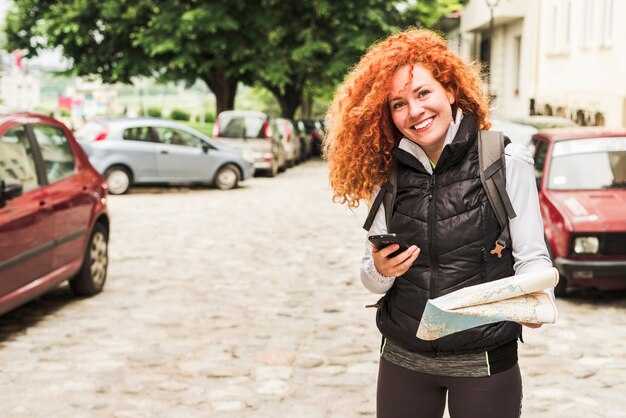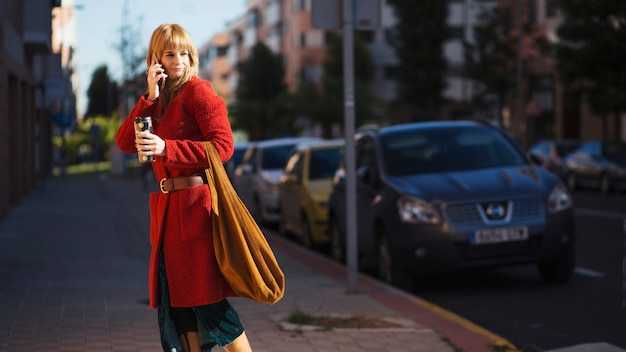To start, book ahead with licensed taxis or official apps to lock in a reliable fare. In the Netherlands, these websites and apps reveal the average taryfy, typical chargesi minutes you’ll spend in transit, helping podróżni gauge the cost before they travel. When you arrive, you can opt for a clearly priced ride instead of flagging down a taxi on the street. weve tested several providers and found that these options consistently save time and money.
Expect a base fare around €3–€4, then about €1.80–€2.50 per kilometer and €0.30–€0.60 for each minute of waiting; these charges reflect normal city rides. A typical ride from Amsterdam Central to Schiphol averages €40–€60 in daytime, rising by around 20% at night or during peak traffic.
Airport pickups often carry a surcharge of about €5–€8; intercity trips follow higher charges w surroundings of airports and during evenings and weekends. If you booked earlier, the app will display a forecasted total before you confirm. Use licensed taxis or trusted apps to ensure clear receipts and fair taryfy.
Be cautious and verify the meter or upfront quote before you start. If a driver offers a fixed price that seems too high, compare with the app estimate or another licensed option. These steps help travelers stay cautious and informed in the country.
In major cities, you’ll find sharing rides and traditional taxis; compare options on websites oraz transport apps. If you’re curious about rides like uber or local equivalents, check availability in your destination and read local websites for current terms and minimum fares. For travelers who want predictable costs, ask the driver for an estimated fare before departure, and consider a fixed-rate option if offered by the app.
Fare Structures: Understanding Metered Taxis, Flat Rates, and Uber Pricing in Dutch Cities
Check the price estimate in the taxi app before you ride; this simple step helps you choose the best option for your location and plans–metered taxis, flat-rate transfers, or Uber–without surprises when you arrive. Save the file for offline reference.
Metered taxis in Dutch towns use a base fare plus distance and time, with values that vary by city. In normal conditions, expect a base of about €3.50–€4.50, €1.80–€2.50 per kilometer, and €0.40–€0.90 per minute of waiting. Those figures can rise at night or with extra luggage. When you’re near central neighborhoods, you’ll typically reach your destination faster than you expect, and you can walk to nearby transit stops if you prefer.
Flat-rate options appear mainly for airport runs and some intercity connections. A Schiphol to Amsterdam center transfer often falls in the €35–€45 range, while longer airport hops to nearby towns may vary by operator and distance. Always confirm the flat price in the app or with the driver before departure, and use it when you want predictable costs, especially if you’re traveling with bulky bags.
Uber pricing blends a base fee, per-kilometer and per-minute charges, plus occasional surge. In major towns, look for roughly €1.50–€2.50 as the base, €0.60–€1.30 per kilometer, and €0.15–€0.40 per minute. Surge multipliers can push rates higher during peak times or events, so a ride in the city center may cost more. For short trips within the city, UberX often provides a competitive option when you compare with a meter or a fixed-rate ride.
In this article, use the price estimates to compare options and tell your plan to a friend. You can find better values by comparing across options. While rides can be convenient, wiser choices save money: if you’re near your hotel and the distance is short, walking or using a bicycle for short hops is often cheaper and faster. Those routes work well when you can bike along bike lanes or cycle-friendly streets in your location, and using bicycles can be a better option than a taxi on light traffic days.
источник: local transit guides and user feedback note these patterns and emphasize airport fixed rates and city-specific variations. They remind you to verify the current price before boarding and to avoid unlicensed drivers by choosing licensed taxis or rideshare services through official apps.
Where to Hail a Ride: Airport Taxis, Train Stations, and City Hubs in Amsterdam and Beyond

Always use the official taxi stand outside Schiphol arrivals for a meter-based ride that comes with a clear bill. If you value reliability, this is definitely the quickest way to start in Amsterdam.heres a quick rule: pick the stand with a clearly displayed plate, confirm the location and the company, and agree on the estimated fare before you sit. Outside the airport and at major hubs you’ll find multiple options, but the stand guarantees a fair meter rate and helps avoid surcharges. Weve found that reading the plate and sticking to licensed drivers gives you a safer, smoother experience and a better chance of a fair bill.
Airport Taxis: Schiphol and Major Hubs
Schiphol’s official stands are located just outside the arrivals area. The meter starts with a base fare and then per-kilometer charges apply; a ride to Amsterdam’s center typically costs €35-€50, depending on traffic. If a driver offers a fixed price, compare it to the meter estimate because surcharges may apply during late-night hours or holidays. Have your destination ready to avoid delays and confirm the vehicle’s plate and company before you submit payment. If you notice a bolt icon on the meter or payment screen, it usually signals a card option, so ask for the receipt and note the charge details.
Train Stations and City Hubs: Amsterdam and Nearby Towns
Outside train stations such as Amsterdam Centraal and Sloterdijk you’ll see official taxi ranks with multiple firms offering service. For short trips within Amsterdam, a ride from Centraal to Dam Square often falls in the €10-€20 range; longer routes or peak traffic push the price higher. In towns located near Amsterdam–Haarlem, Leiden, Utrecht, Rotterdam–taxis are also available at stations and central squares; fares rise with distance and time. To avoid surprises, tell the driver your exact location (address or landmark) and request a clear quote before you submit payment. Information on the meter and the company helps you agree on a fair rate, and keeping the plate visible makes it easy to verify later if needed. This setup gives you a relatively straightforward option at each location, with multiple firms offering service and the chance to agree on the best rate before you ride.
| Lokalizacja | Where to Find | Typical Cost to City Center | Uwagi |
|---|---|---|---|
| Schiphol Airport (AMS) | Official taxi stand outside arrivals | €35-€50 | Meter-based; base fare applies; surcharges may occur late night/holidays; read plate |
| Amsterdam Centraal | Outside main entrance | €10-€20 (to central areas) | Short, reliable rides; official stand available |
| Haarlem Central | Outside main station | €30-€60 | Nearby town; higher fare with longer distance |
| Utrecht Centraal | Outside main hall | €60-€90 | Longer distance; meter-based pricing applies |
| Rotterdam Centraal | Outside main station | €80-€120 | Significantly longer ride; use licensed stand |
Payment Methods and Tipping: Cash, Card, Contactless, and Gratuity Guidelines

Use card or contactless payments on every ride; it speeds up the stop and you get a receipt for costs during sightseeing around the city.
Accepted payments vary by company and location, but you will typically find these options:
- Cash is still accepted by many drivers, though some firms prefer electronic payments.
- Card payments, including debit and credit, are widely supported and convenient for most travelers.
- Płatności zbliżeniowe kartą lub za pomocą portfela w smartfonie (Apple Pay, Google Pay) działają w większości taksówek i są często szybsze.
- Niektóre taksówki akceptują lokalne aplikacje lub płatności kodami QR; posiadanie zarówno karty, jak i gotówki zapewnia możliwość ukończenia przejazdu, jeśli jedna metoda zawiedzie.
Taksówki na lotnisku Schiphol zazwyczaj wyświetlają taryfę z góry; sprawdź taryfę na taksometrze, zwłaszcza w przypadku kursów z lotniska, gdzie może obowiązywać dopłata. Taryfy są regulowane przez miasto, z opłatą podstawową plus opłaty za kilometr i czas oczekiwania. Typowe zakresy to opłata podstawowa w wysokości około 3–4 euro, około 1,5–2,5 euro za kilometr i około 0,3–0,6 euro za minutę oczekiwania. Taryfy nocne lub określone trasy mogą wiązać się z niewielkimi dodatkowymi opłatami.
Zasady dotyczące napiwków: dawanie napiwków nie jest obowiązkowe w Holandii, ale zaokrąglanie kwoty lub dodanie 5–10% za dobrą obsługę jest powszechne. Jeśli korzystasz z firmy, która to obsługuje, możesz dodać napiwek na ekranie płatności; w przeciwnym razie napiwki gotówkowe są całkowicie akceptowalne. Na ruchliwych ulicach i w amsterdamach lokalni kierowcy często okazują wdzięczność drobnym napiwkiem po sprawnym przejeździe. Jeśli opłata wydaje się nieoczekiwanie wysoka, możesz złożyć skargę do firmy; większość firm rozpatruje spory i zwraca pieniądze, gdy jest to uzasadnione.
Bezpieczeństwo i legalność: weryfikacja kierowców, kontrola pojazdów i co zrobić, gdy coś wydaje się nie w porządku
Zawsze sprawdzaj tożsamość kierowcy i pojazd, zanim wsiądziesz. W Holandii taksówki należą do zaufanej sieci i działają z wyraźnymi identyfikatorami kierowcy i widocznymi tablicami rejestracyjnymi. Jeśli złożyłeś zamówienie za pośrednictwem centrum lub aplikacji, porównaj szczegóły na ekranie z tym, co znajduje się w samochodzie i na plakietce, i kontynuuj tylko wtedy, gdy się zgadzają; dodaliśmy tam szybkie sprawdzenie w celu potwierdzenia.
Przed rozpoczęciem przejazdu zapytaj o przejazd z taksometrem lub o opcję stałej ceny. Taryfa z taksometrem jest normalna i pomaga uniknąć niespodzianek; jeśli kierowca oferuje wyższą stawkę, ponieważ jesteś w centrum lub po godzinach, nalegaj na standardową stawkę i poproś o paragon.
Preferuj płatności kartą lub zbliżeniowo; gotówka pozostaje akceptowana w niektórych miejscach, ale opcje cyfrowe zmniejszają liczbę sporów. Jeśli możesz, rozpocznij przejazd z preferowaną metodą płatności w aplikacji, aby mieć zapis.
Jeśli coś się wydarzy i kierowca mówi coś sprzecznego, zatrzymaj się w bezpiecznym miejscu i wyjdź, zwłaszcza jeśli samochód jedzie nieznaną trasą lub nie ma znaku taksówki. Możesz poprosić kierowcę o zatrzymanie się w dobrze oświetlonym, ruchliwym miejscu i skorzystać z postoju taksówek, gdy to możliwe.
Rejestruj i zgłaszaj: zanotuj szczegóły dotyczące konkretnego samochodu, numer rejestracyjny i imię kierowcy; jeśli to możliwe, zrób zdjęcie; następnie złóż raport operatorowi taksówki lub lokalnemu urzędowi transportowemu. Zachowaj plik ze szczegółami przejazdu, aby móc się do niego odnieść w przypadku sporu dotyczącego opłat.
Podsumowując: te kontrole są normalną praktyką, która chroni pasażerów i ludzi. Istnieją opcje, takie jak oficjalne postoje, dyspozytorzy firmowi lub zamówienia przez aplikację; w miastach Holandii powinieneś mieć pewność co do usługi, z której korzystasz, i możesz uniknąć niespodzianek, trzymając się zaufanych dostawców.
Częste pułapki i sposoby na uniknięcie zawyżonych opłat, opóźnień lub oszustw
Recommendation: Sprawdź lokalne stawki przed rozpoczęciem jazdy, korzystając z aplikacji taksówkarskiej lub taksometru kierowcy. Jeśli nie jesteś pewien, zapytaj o szacunkową opłatę z góry. Ta prosta kontrola pozwala uniknąć niespodzianek i chroni Twój budżet.
Większość zawyżonych opłat ma miejsce, gdy kierowca korzysta z dłuższej trasy lub nalicza dopłaty lotniskowe albo nocne. Przed rozpoczęciem powtórz swoją propozycję najkrótszej trasy i poproś o wycenę całej podróży; jeśli trasa wydaje się dłuższa niż oczekiwano, zatrzymaj się i omów krótszą opcję. Mogą jednak odpowiedzieć w przyjazny sposób, ale możesz przejąć kontrolę, nalegając na najkrótszą rozsądną odległość. Jeśli się nie zgadzasz, możesz przejść do innej opcji przejazdu.
Na koniec otrzymasz pełny rachunek; pokazuje on czas rozpoczęcia i zakończenia, odległość oraz szczegółowy rozkład opłat. Jeśli zauważysz niezgodność, porównaj go z zapisem w aplikacji, a następnie, w razie potrzeby, złóż notę w firmie lub w swoim banku.
Płać kartą lub aplikacją, kiedy tylko jest to możliwe; manipulowanie gotówką jest łatwe i pozostawia mniej śladów. Jeśli płacisz gotówką, poproś o paragon i zanotuj identyfikator kierowcy, aby móc później złożyć reklamację.
Zastosuj podejście oparte na wskazówkach, aby zachować kontrolę: udostępnij komuś szczegóły przejazdu i sprawdź mapę, czy trasa jest zgodna z rzeczywistością. W przypadku opóźnień poproś o szacowany czas przybycia i rozważ alternatywy, takie jak tramwaje lub autobusy, aby zwiedzić okolicę i utrzymać swój dzień na właściwym torze.
Bądź czujny na popularne oszustwa: kierowcy, którzy odmawiają włączenia taksometru, naciskają, aby skorzystać z wcześniejszego odbioru, obiecując niższą stawkę z góry, lub wybierają dziwne objazdy. Zrób zdjęcie tablicy rejestracyjnej i karty opłaty, dodając notatki, aby w razie potrzeby złożyć raport. Jeśli będą naciskać, zakończ przejazd i wybierz inną opcję.
W tym artykule dowiesz się, jak uniknąć typowych pułapek. W okresach szczytu rezerwuj z wyprzedzeniem lub jedź wcześniej, aby uniknąć korków i długiego oczekiwania. Ich aplikacje z poradami pokażą Ci preferowane pasy ruchu i natężenie ruchu, pomagając zdecydować, co wybrać: przejazd, spacer, tramwaj, autobus lub współdzielenie przejazdu. Istnieje wiele opcji, aby Twój dzień przebiegał sprawnie.



Komentarze